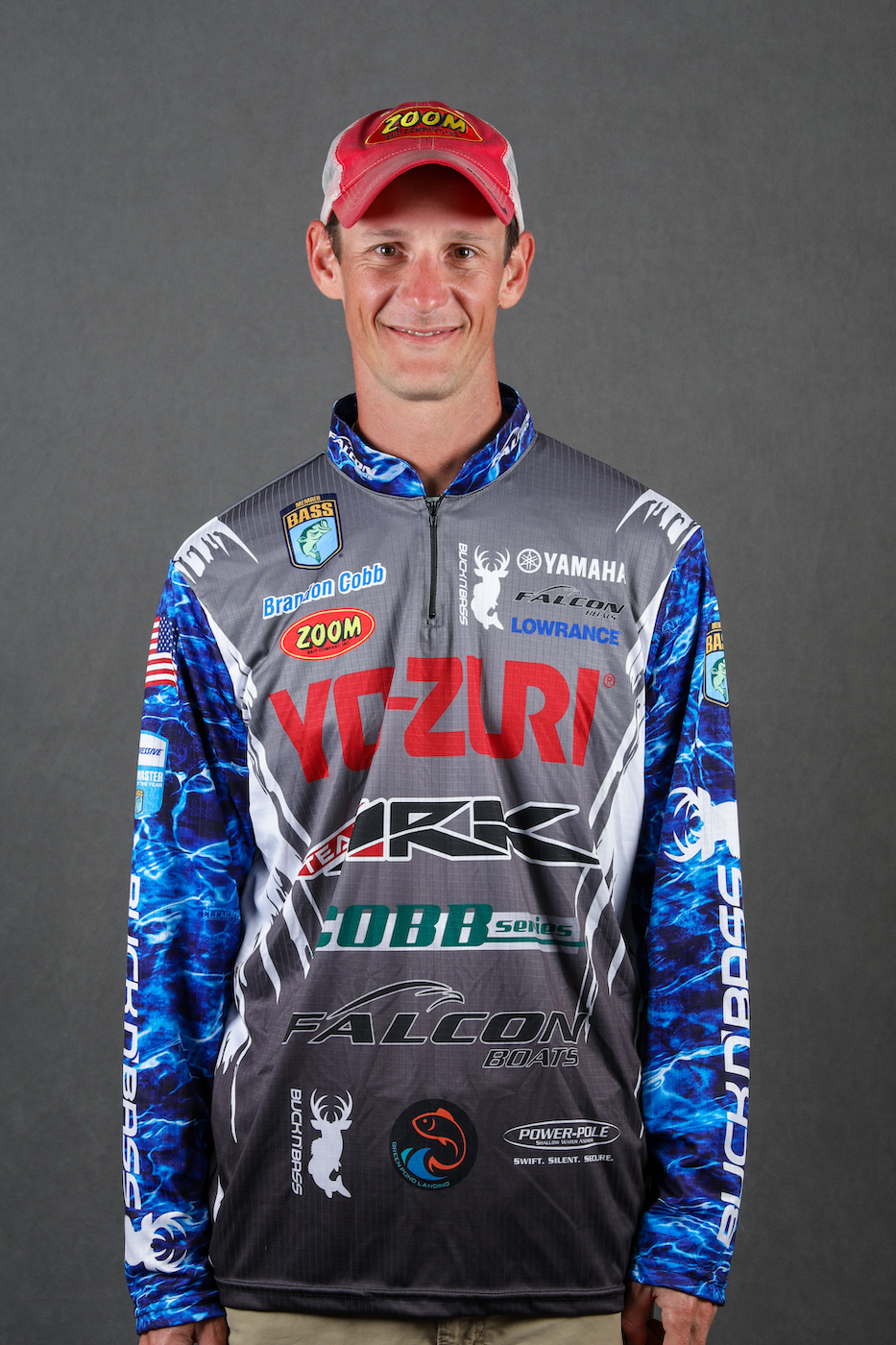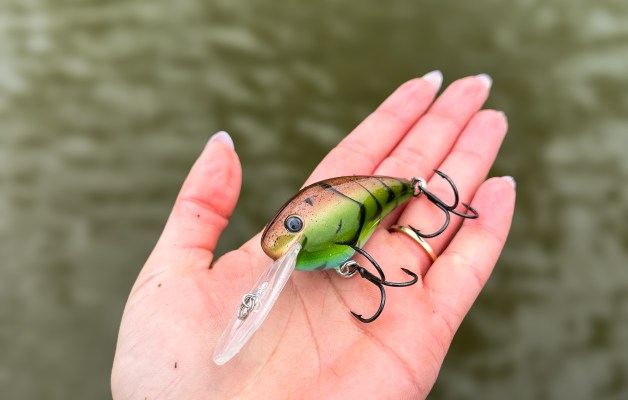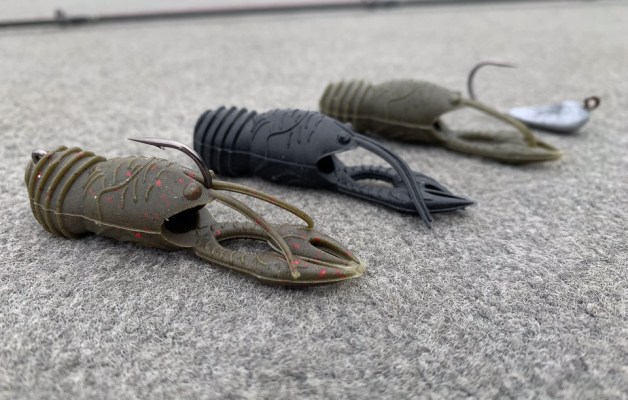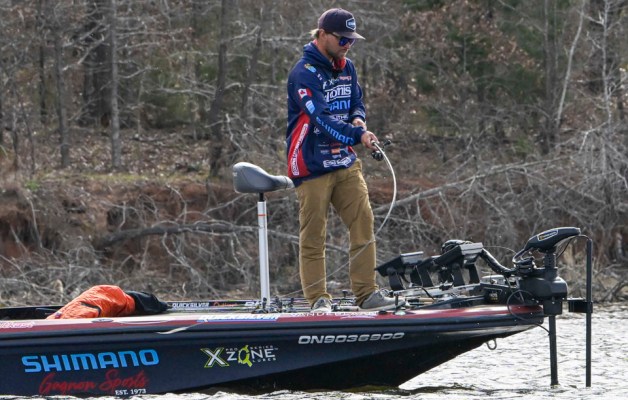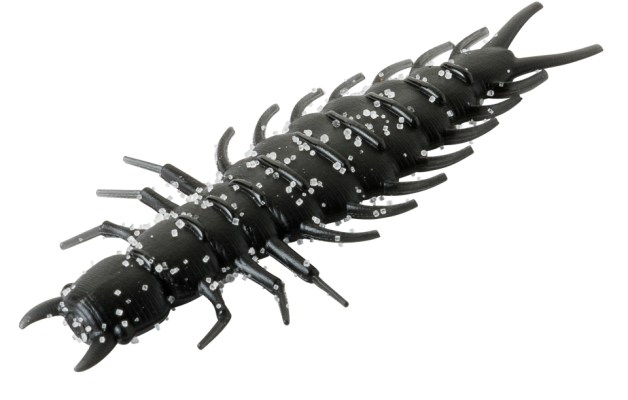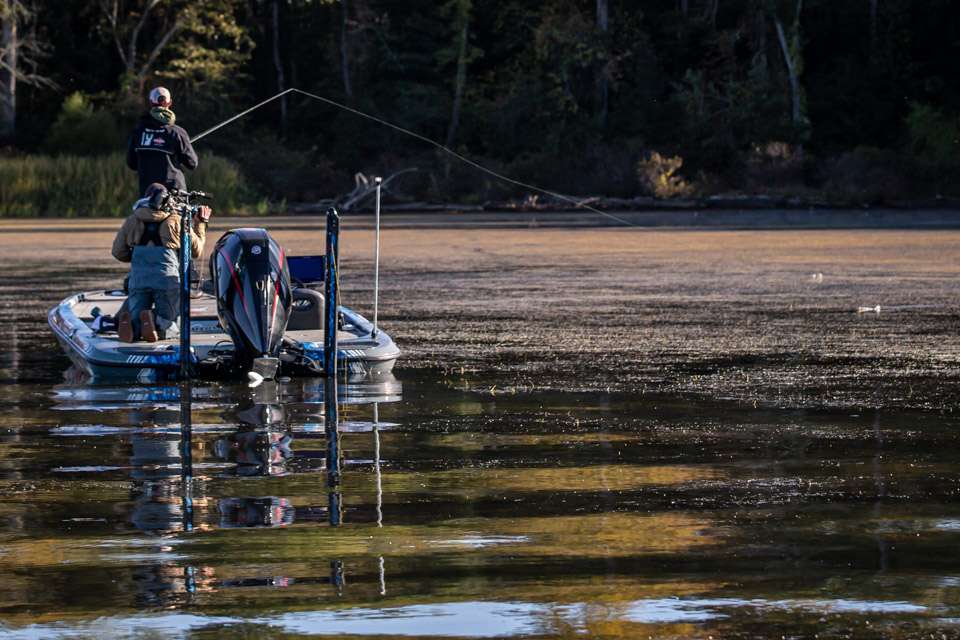
I’m sometimes asked if I stop fishing plastic baits when the water gets cold. Is there a point when they don’t work anymore? My answer is simple: If there is such a point, I’ve never found it. What I do is change what plastics I fish with, but I never stop using them.
In the early fall when the water is fairly warm — above 60 degrees — I fish with active baits. By that I mean, when the bass are out deep, finesse lures that imitate shad are my thing. Drop-shot type baits are especially effective, and I want them to be lively. The idea is that they look like the real thing.
It’s about fishing with a plastic lure that works easy. Zoom has a bait called the Tiny Fluke. It’s 3 inches long. They really get it done for me. It works well on a drop shot, and it’ll work on a Midwest Finesse Rig too. Just rig it up and move it along the bottom like a small shad pecking for something to eat.
When my target is shallow bass, I like baits that have a lot of action to them. I want tentacles that move around and look lively. That’s what the real thing is going to be doing so that’s what I want my lure to do when I’m fishing it.
But, the water doesn’t stay warm. When it gets cold — maybe below 60 degrees depending on what part of the country you’re talking about — I want something with a little less action. And that’s true regardless of what depth I’m fishing. The idea is that nothing in cold water moves very fast or very much. Again, I want my plastic to look and act like the real thing.
The best type of baits I’ve found for that are ones that are a little bit short and stubby. I want the tentacles and flappers to be short and thick or at least designed so they don’t move much.
In truth, though, most of my wintertime fishing — and for most of the other anglers where I live, too — is done with jigs. It seems like they produce the most and the biggest bass. Even then, though, we still use plastic trailers.
One of the most popular trailers looks like the old pork chunk that we all grew up fishing. It’s really not much more than a pyramid-shaped head with a couple of short, nondescript flappers on the back. All we do is hang it on the hook and start casting. That’s old-fashioned, to be sure, but it works.
The specific chunk that you see the most often is a Zoom Chunk. It looks old school. The basic design has been around forever, but the fish still like it.
So here’s the thing about plastics: Don’t put them away just because the leaves have fallen and you can see your breath when you walk outside in the morning. They aren’t just for warm water. They’re actually like every other lure we use. They need to be changed around depending on when and where we’re fishing.

